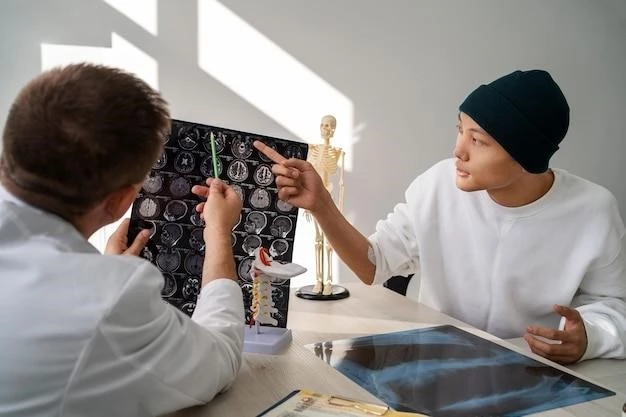Introduction to Neuropathy Motor Sensory Type 2 Deafness Mental Retardation
Information on the disease Neuropathy motor sensory type 2 deafness mental retardation involves the gradual degeneration of nerves, leading to sensory and motor issues, often accompanied by deafness and mental retardation.
Overview of the Disease
The disease, Neuropathy Motor Sensory Type 2 Deafness Mental Retardation, is characterized by the gradual degeneration of nerves affecting both sensory and motor functions. It presents with additional symptoms of deafness and mental retardation, often manifesting in early childhood. Recent studies have highlighted the genetic aspects and clinical features, including the absence of large myelinated fibers, genetic heterogeneity, and distinct clinicopathological entities. Therapeutic interventions aim to manage the impact on both motor and sensory functions while addressing associated symptoms of deafness and mental retardation. The disease’s progressive nature underscores the need for further research to enhance our understanding and develop more effective treatment approaches.
Hereditary Motor and Sensory Neuropathy with Deafness and Mental Retardation
The research describes individuals afflicted with an early-onset hereditary motor and sensory neuropathy, accompanied by deafness and mental retardation. Clinical and electrophysiological studies reveal significant reductions in motor and sensory conduction velocity, alongside sural nerve biopsy findings indicating absence of large myelinated fibers.
Clinical Features and Diagnosis
Clinically, individuals with Neuropathy Motor Sensory Type 2 Deafness Mental Retardation present with early-onset hereditary motor and sensory neuropathy, accompanied by deafness and mental retardation. Electrophysiological studies demonstrate significant reductions in motor and sensory conduction velocity and the absence of sensory action potentials. Sural nerve biopsy findings often reveal the absence of large myelinated fibers, indicating a distinct clinicopathological entity that may be transmitted as an autosomal recessive trait. The diagnostic approach involves a comprehensive evaluation of the clinical features, electrophysiological tests, and neuropathological changes in sural nerve biopsies to characterize the disease accurately.

Genetic Aspects of Neuropathy Motor Sensory Type 2
Evidence from genetic studies indicates that Neuropathy Motor Sensory Type 2 Deafness Mental Retardation is associated with specific gene loci, possibly under autosomal recessive inheritance patterns. Research highlights the presence of distinct clinicopathological entities linked to the disease, emphasizing the importance of genetic factors in its development and transmission;
Autosomal Recessive Inheritance
Research indicates that Neuropathy Motor Sensory Type 2 Deafness Mental Retardation may be transmitted within families as an autosomal recessive trait. Genetic analyses have identified specific gene loci associated with the disease, highlighting the importance of understanding the inheritance patterns in individuals affected by this condition. The distinct clinicopathological entity, characterized by sensory and motor neuropathy alongside deafness and mental retardation, emphasizes the genetic aspects contributing to the development and manifestation of this disease.
Symptoms and Manifestations of the Disease
Symptoms of Neuropathy Motor Sensory Type 2 Deafness Mental Retardation include early-onset hereditary motor and sensory neuropathy with accompanying deafness and mental retardation. Clinical presentations often demonstrate marked reductions in motor and sensory conduction velocity, along with distinctive neuropathological findings such as the absence of large myelinated fibers. Additionally, electrophysiological studies reveal varied sensory action potentials.
Impact on Motor and Sensory Functions
Individuals affected by Neuropathy Motor Sensory Type 2 Deafness Mental Retardation experience profound consequences on both motor and sensory functions. Clinical findings often reveal marked reductions in motor and sensory conduction velocity, underscoring the debilitating effects on nerve transmission. Electrophysiological studies commonly show an absence of sensory action potentials, further complicating the neurological deficits. Sural nerve biopsies frequently demonstrate the absence of large myelinated fibers, indicative of the extensive neuropathological changes underlying the disease’s impact on motor and sensory pathways.
Management of Neuropathy Motor Sensory Type 2 Deafness Mental Retardation focuses on addressing the symptoms and complications affecting both motor and sensory functions; Treatment strategies aim to alleviate neuropathic pain, improve motor coordination, and enhance sensory perception. Therapeutic interventions may include physical therapy to maintain muscle strength and mobility, assistive devices for sensory impairments, and pharmacological options to manage neuropathic symptoms. Multidisciplinary care involving neurologists, audiologists, and psychologists plays a crucial role in optimizing the quality of life for individuals affected by this complex condition.
Management and Treatment of Neuropathy Motor Sensory Type 2
The management and treatment of individuals affected by Neuropathy Motor Sensory Type 2 Deafness Mental Retardation aim to address the symptoms and complications impacting both motor and sensory functions. Therapeutic strategies involve a multidisciplinary approach focusing on pain management٫ motor coordination improvement٫ and sensory enhancement. Treatment modalities may encompass physical therapy for maintaining muscle strength٫ assistive devices for sensory impairments٫ and pharmacological interventions targeting neuropathic symptoms. Collaborative care involving neurologists٫ audiologists٫ and psychologists is essential in optimizing the overall quality of life for patients with this complex condition.
Recent research elucidates the hereditary nature of Neuropathy Motor Sensory Type 2 Deafness Mental Retardation, characterized by early-onset sensory and motor neuropathy with concurrent deafness and mental retardation. Genetic studies have identified specific gene loci associated with the condition, highlighting the intricate interplay between genetic factors and clinical manifestations. Further investigations aim to deepen our understanding of the disease’s pathophysiology and potentially unveil novel therapeutic targets.
Research Advances and Findings on Neuropathy Motor Sensory Type 2
Recent studies have shed light on the hereditary nature and clinical manifestations of Neuropathy Motor Sensory Type 2 Deafness Mental Retardation, emphasizing the presence of early-onset sensory and motor neuropathy coupled with deafness and mental retardation. Genetic research has uncovered specific gene loci associated with this condition, highlighting the complex genetic underpinnings of the disease. Ongoing investigations aim to enhance our knowledge of the disease’s pathophysiology and potentially identify innovative therapeutic targets to improve patient outcomes.

Conclusion and Future Perspectives
In conclusion, Neuropathy Motor Sensory Type 2 Deafness Mental Retardation presents complex challenges due to its hereditary nature and impact on both motor and sensory functions, often accompanied by deafness and mental retardation. Recent research has provided valuable insights into the genetic aspects and clinical manifestations of this disease. Moving forward, future studies should focus on unraveling the underlying pathophysiology, identifying potential therapeutic targets, and enhancing multidisciplinary approaches to optimize patient care and quality of life. By fostering collaboration between researchers, clinicians, and genetic specialists, we can strive towards improved management strategies and better outcomes for individuals affected by this debilitating condition.
